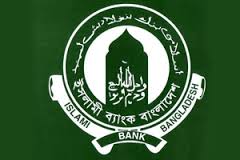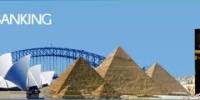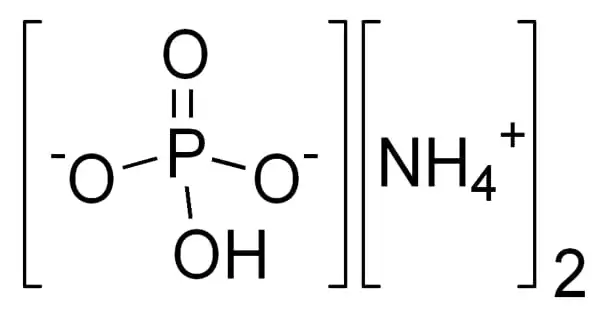Historical background of islamic bank
The history of Islamic Banking could be dividing in two parts. First: When it still remained an idea, second: When it become a reality –by private initiative in some countries and by law in others. There has always been a desire to establish financial institutions to operate as per the tents of Islamic Shariah. The first attempt in this regard was made in Pakistan during 1950s as a pilot scheme, but unfortunately it didn’t succeed. It was followed by a more successful venture in the form of a local Bank in Egypt (Myt Gant Savings Bank, July, 1963). In 1969 Islamic Bank was got up Malaysia through passing an Act in parliament which is being conducted successfully today. In 1970, King Faisal, The Government of K.S.A, called a meeting to moderate the banking of Muslim countries in accordance with the loss of Islamic Shariah. In the light of this purpose, on 18th December 1973 the decision of setting up an international Islamic Bank was taken up in the finance ministry of O.I.C, which starts its work on 20th October 1975 in Jeddah. In 1977, Faisal Islamic bank in Sudan, Kuwait Finance Bank House in Kuwait, Faisal Islamic bank in Egypt and Jordan Islamic Bank in 1978 was founded. In 1977, International Association of Islamic bank was founded to create equality among the Islamic Banks of different countries.
Islamic Bank Bangladesh Limited was incorporated on 13.03.1983 as a public Company with Limited liability under the companies Act, 1913. The Bank obtained permission to commence business from 27.03.1983. Islamic Bank Ltd. Is the first interest free Bank in South-East Asia. The establishment of this Bank has ushered a new era in Bangladesh, the second largest Muslim country in the world. The bank is committed to help the people in Halal earnings and Halal investment. All of its activities are run as per Islamic Shariah. The Islamic Development Bank, some foreign financial institutions of Saudi Arabia, Kuwait, Bahrain, United Arab Emirate and Jordan also came forward to establish this bank.
The total number of branches of the bank as on 31st December 1988 stood at 27. The Bank has taken up an optimality expansion program to open a large number of branches during the year 1989 in urban and rural areas and it is expected that with the implementation of the expansion program almost all important commercial places will come under the operational activities of the Bank.
Mission of Islami Bank Bangladesh Limited
To establish Islamic Banking through the introduction of welfare oriented banking and also ensure equity and justice in the field of all economic activities, achieve balanced growth and equitable development through diversified investment operations particularly in the priority sectors and less development areas of the country, To encourage social-economic enlistment and financial services to the low-income community particularly in the rural area.
Islami Bank Bangladesh Limited has huge and vast mission and objective.
To conduct interest free banking.
Ensure equity and justice in the field of all economic activities.
To establish participatory banking instead of banking on debtor creditor relationship.
To establish a welfare-oriented banking system.
Vision of Islami Bank Bangladesh Limited
Vision of the organization is to always strive to achieve superior financial performance, be considered a leading Islamic Bank by reputation and performance.
Islamic bank vision to always strive to achieve superior financial performance is considered a leading Islamic bank reputation and performance. To establish and maintain the modern banking technology, to ensure the soundness and development of the financial system based on Islamic principles and to become the strong and efficient organization with highly motivated professional, working for the benefit of people, based upon accountability, transparency and integrity in order to ensure the stability of financial system.
Management of IBBL
Islami bank Bangladesh ltd. is being managed by a board of directors comprising foreigners and local. An executive committee is formed by the Board of Directors for efficient and smooth operation of the bank. Besides, a management committee looks after the affairs of the bank. The management and formulation of policy of the bank are vested in the board of directors, which is comprised of 14 local and 9 foreign directors by virtue of articles of association, A Bangladeshi director is to be elected as the chairman of the company. To assist them there is a high powered committee named exclusive committee. There are six members in this committee nominated by the board of directors. Besides, these are another committee named management committee consisting of senior most executives of the Bank. There is also a Shariah council consisting of prominent Alims, Economists and Banker who acts as a supervisory body over the day to day activities of the bank from the point of view of Islamic Shariah.
Capital and reserve of IBBL
The authorized capital of the bank is TK. 1000 cores divided into 100000000 ordinary shares of Tk. 100/ each. The reserve fund has increased during the year from 80 cores to Tk. 1.43 core. Total equity of IBBL is Tk. 17,932.00 million as on 30.09.08. Paid up capital of IBBL is Tk. 475.20 core (local shareholders 42.64% and foreign shareholders 57.36%).In order to strengthen the equity base of the bank commiserating with the deposit liability, the Board of directors very recently has decided to raise the paid-up capital to TK.20 core in two phases- primarily up to TK.15 core and ultimately to TK. 20 core preparation in this regard are in foot and it is expected that shares of public subscription shall be floated by June, 1989.
Objectives of IBBL
The objective of Islamic Banking is not only to earn profit but to do good and bring welfare to the people. Islam upholds the concept that money, income and property belongs to Allah and this wealth is to be used for the goods of the society. The main object of the Islami Bank Bangladesh Limited (IBBL) had been to offer an interest free banking system in the financial market. Apart from that, the bank started its operation in the country with a view to realizing the following objectives.
- To offer interest-free banking system in the financial market.
- To establish a partnership relationship with customers and to eliminate the idea of the debtor-creditor relationship of traditional banks.
- To establish welfare oriented banking system.
- To utilize mobilize savings towards productive sectors.
- To investment on profit and risk sharing basis.
- To invest to those business sectors those are found acceptable from Shariah point of view.
- To accept deposits on profit and loss sharing basis.
- To create employment opportunities by investing savings towards prospective economic sectors.
- To extend banking services towards the poor, helpless and low-income group of people in the society in order to uplift of their standard of living.
- To contribute to establishment of a society by equitable distribution of wealth.
- To establish justice in trade and commerce in the country.
- To develop morals among the people and to establish the shariah in the field of trade and commerce.
- To render services for the economic development of the nation.
- To contribute towards establishment of an Islamic Economic System in the Country.
Functions of IBBL
Islamic banks render almost similar services to their customers conventional banks do. However, differences exist in administering incentives for deposits and charging for capital investments, in so far as techniques of calculating the incentive or the cost of the capital is concerned.[1] Like a conventional bank, the Islami bank also accepts deposits from customers and advances investment. The bank invests its funds for short as well as long term deposits. The Islami bank also acts as a custodian of its customers and performs all foreign transactions on behalf of them. The IBBL perform mainly three different types of functions Banking services, Investment, and Foreign exchange services Banking services comprise three regular types of operations related to acceptance of deposits in the different customers accounts as mentioned earlier, as well as, different transactional services to the customers, safekeeping of personal valuables and securities, collection of bills, agency services, etc. The bank lends its funds for the rapid growth and development of industrial sectors and the promotion of trade and commerce in the country. The bank also invests its funds in various socio-economic schemes such as, Rural Investment Scheme, Small Traders Investment Scheme, Doctors Investment Scheme, Small Transport Scheme, Small and Cottage Industry Project, Hawker’s Investment Scheme, Household Durable Scheme and Low Cost Housing Scheme. The third important function of the bank is to render services to customers regarding foreign exchange transactions plus services to its customers for import and export of different industrial, commercial, agricultural and other items.
Deposits products
Islami Bank Bangladesh Ltd gives special importance on savings. The bank mobilizes deposits through the operation of following account.
| Islami Bank’s Product
|
Deposit schemes
|
| Al-Wadeeah Current Account |
| Mudaraba Savings Account |
| Mudaraba Term Deposit Receipt |
| Mudaraba Special Notice Account |
| Mudaraba Special Savings (Pension) Account |
| Mudaraba Hajj Savings Account |
| Mudaraba Savings Bond Scheme |
| Mudaraba Foreign Currency Deposit Scheme (Savings) |
| Mudaraba Waqf Cash Deposit Account |
| Mudaraba Monthly Profit Deposit Scheme |
| Mudaraba Muhor Savings Deposit Scheme |
Current account is operated on Al-wadeah principle and all other deposit accounts on mudaraba principle of Islamic Shariah. The bank distributes minimum 65% of its investment income earned through deployment of Mudaraba deposits among the Mudaraba depositors.
Weight ages of different Mudaraba accounts
Weight age means preference of one product in comparison to other product. It has giving the value or importance to the particular mater higher or less than that of other matter. Contact ratios is 65:35 i.e. depositors=65%, management fees= 20% & reserve fund for off-setting investment loss= 15%.
| SL No | Particulars of Deposits | Provisional Rate from 01.05.2009 to 31.07.2009 | Revised Provisional Rate w.e.f. 01.08.2009 | Revised Provisional Rate w.e.f. 01.09.2009 |
| 1 | Mudaraba Hajj Savings | |||
| From 11 years to 25 years Term | 9.50 % | 9.40 % | 8.50 % | |
| From 1 year to 10 years Term | 8.50 % | 8.40 % | 8.20 % | |
| 2 | Mudaraba Waqf Cash Deposit Account (MWCDA) | 9.50 % | 9.40 % | 8.50 % |
| 3 | Mudaraba Special Savings (Pension) | |||
| 10 Years Term | 9.00% | 8.90% | 8.20% | |
| 5 Years Term | 8.00% | 7.90% | 6.90% | |
| 4 | Mudaraba Muhor Savings Account | |||
| 10 Years Term | 8.00% | 7.90% | 8.20% | |
| 5 Years Term | 7.00% | 6.90% | 6.90% | |
| 5 | Mudaraba Savings Bond (MSB) | |||
| 8 Years Term | 9.00% | 8.90% | 8.00% | |
| 5 Years Term | 8.00% | 7.90% | 6.90% | |
| 6 | Mudaraba Monthly Profit Deposit Scheme (MMPDS) | |||
| 5 Years Term | 9.50% | 9.40% | 7.50% | |
| 3 Years Term | 8.50% | 8.40% | 6.50% | |
| 7 | Mudaraba Term Deposits | |||
| 36 Months | 9.50% | 9.40% | 8.00% | |
| 24 Months | 8.50% | 8.40% | 7.00% | |
| 12 Months | 7.50% | 7.40% | 6.00% | |
| 6 Months | 7.00% | 6.90% | 5.50% | |
| 3 Months | 6.50% | 6.40% | 5.00% | |
| 8 | Mudaraba Savings Account | |||
| For Customers | 5.50% | 5.40% | 4.50% | |
| For Banks | 2.00% | |||
| 9 | Mudaraba Special Notice Deposit | |||
| For Customers | 4.00% | 3.90% | 3.00% | |
| For Banks | 1.50% |
Updated on: 10th Sep 2010
Islami Bank Bangladesh Limited at a glance
Corporate Information
(As on June 30, 2010)
| Date of Incorporation | 13th March 1983 |
| Inauguration of 1st Branch (Local office, Dhaka) | 30th March 1983 |
| Formal Inauguration | 12th August 1983 |
| Share of Capital | |
| Local Shareholders | 41.77% |
| Foreign Shareholders | 58.23% |
| Authorized Capital | Tk. 10,000.00 million |
| Paid-up Capital | Tk. 7,413.00 million |
| Deposits | Tk. 265,193.00 million |
| Investment (including Investment in Shares) | Tk. 255,178.00 million |
| Foreign Exchange Business | Tk. 277,739.00 million |
| Branches | |
| Total number of Branches | 244 |
| -Regular Branches | 224 |
| -SME Service Centers | 20 |
| Number of AD Branches | 43 |
| Number of Shareholders | 52164 |
| Manpower | 9588 |
Some extra ordinary features of Islami Bank Bangladesh Limited
It is a first interest free commercial Bank based on Shariah in South-East Asia.
Pioneer of welfare banking. [2]
- It is a Multi-national Bank. The partnership of this Bank belongs to IDB, The Al-Rezi of Saudi Arabia and many socio economic Government and non Government institution of Middle East.
- It possesses the top level among the banks, which conduct foreign trade.
- It is proclaimed VIP standard because of paying more tax by the Government.
- It has been awarded the best bank of Bangladesh in 1999 and 2000 by the famous magazine of U.K “Global Finance”.
- It is one of the top banks among the 2000 international Bank.
- It is one of the best banks among the five hundred Asian banks.
- It is one of the top Banks in the rating of CAMEL.
- It is using computer swift, web site, e-mail, and other sophisticated modern technology.
- It has arranged to start ATM in the selected branch very soon.
Total equity position
Particulars | 2006 | 2007 | 2008 | 2009 | 2010 |
Total Equity | 6,691.12 | 8,331.14 | 10,435.96 | 14,957.74 | 18,572.00 |
Analysis: Total equity position of the IBBL bank is good enough. From 2004 to 2005 it is an increasing trend. It indicates that bank uses more equity to meet the business needs which implies that shareholders provide more attention to improve the bank size.
Paid-up capital and reserve:
The Authorized Capital of the Bank is Taka 5000.00 million and Paid-up capital is Taka 3,456.00 million in 2006. The Paid-up Capital was Taka 67.50 million in 1983.
The Reserve Fund of the Bank has been increasing steadily. On 31st December 1983, it was Taka 0.36 million and stood at
| Taka 9642.64 million as on 31st December 2009. |
| Taka 8453.92 million as on 31st December 2008. |
| Taka 7624.85 million as on 31st December 2007. |
| Taka 6551.23 million as on 31st December 2006. |
| Taka 5450.94 million as on 31st December 2005. |
| Taka 4329.92 million as on 31st December 2004. |
| Taka 3280.80 million as on 31st December 2003. |
| Taka 23852.07 million as on 31st December 2002. |
| Taka 1998.04 million as on 31st December 2001. |
| Taka 1759.65 million as on 31st December 2000. |
| Taka 1115.61 million as on 31st December 1999. |
| Taka 1011.84 million as on 31st December 1998. |
| Taka 930.17 million as on 31st December 1997. |
| Taka 759.39 million as on 31st December 1996. |
| Taka 535.08 million as on 31st December 1995. |
| Taka 303.57 million as on 31st December 1994. |
Map of Bangladesh showing the branch of IBBL
Performance (Amount in Million Taka)
| Particulars | 2005 | 2006 | 2007 | 2008 | 2009 | 2010 |
| Authorized Capital | 3,000.00 | 3,000.00 | 5,000.00 | 5,000.00 | 5,000.00 | 10,000.00 |
| Paid-up Capital | 1,920.00 | 2,304.00 | 2,764.80 | 3,456.00 | 3,801.60 | 4,752.00 |
| Reserves Fund | 3,280.37 | 4,329.92 | 5,450.94 | 6,551.23 | 7,418.04 | 9,308.00 |
| Total Equity | 5,266.47 | 6,691.12 | 8,331.14 | 10,435.96 | 14,957.74 | 18,572.00 |
| Total Deposits (Including bills payable) Gross | 70,552.65 | 88,452.18 | 108,261 | 132,814.00 | 166,812.78 | 200,725.00 |
| Total Investments (Including Inv in Share) Gross | 62,755.90 | 83,893.63 | 102,145 | 123,959.00 | 174,365.55 | 198,763.00 |
| Import Business | 46,237.00 | 59,804.00 | 74,525.00 | 96,870.00 | 137,086.00 | 168,329.00 |
| Export Business | 21,738.00 | 29,151.00 | 36,169.00 | 51,133.00 | 66,690.00 | 93,962.00 |
| Remittance | 16,668.00 | 23,669.00 | 36,948.00 | 53,819.00 | 84,143.00 | 140,404.00 |
| Total Foreign Exchange Business | 84,643.00 | 112,624.00 | 147,642.00 | 201,822.00 | 287,919.00 | 402,695.00 |
| Total Income | 6,710.44 | 8,262.73 | 10,586.78 | 14,038.30 | 17,699.51 | 23,454.00 |
| Total Expenditure | 5,908.42 | 6,419.74 | 8,424.36 | 11,129.63 | 13,918.70 | 15,151.00 |
| Net Profit before Tax | 802.02 | 1,842.99 | 2,162.42 | 2,908.67 | 3,780.82 | 6.348.00 |
| Payment to Government (Income Tax) | 426.61 | 829.35 | 973.09 | 1,490.12 | 2,322.46 | 3,647.00 |
| Dividend | 20% (Stock) | 20%(Stock) | 25% (Stock) | 15% (Cash) 10%(Stock) | 25%(Stock) | 30%(Stock) |
| Total Assets (including Contra) | 98,046.85 | 125,776.94 | 150,959.66 | 188,115.27 | 250,012.79 | 288,017.19 |
| Total Assets (Excluding Contra) | 81,704.75 | 102,149.28 | 122,880.35 | 150,252.82 | 191,362.35 | 230,879.14 |
| Fixed Assets | 2,036.66 | 2,552.70 | 3,067.99 | 3,724.69 | 3,987.23 | 4,407.00 |
| No. of deposit account holder | 1,994,266 | 2,291,269 | 2,705,180 | 3,207,131 | 3,802,709 | 4,361,896 |
| No. of investment account holder | 223,954 | 264,863 | 297,943 | 421,751 | 508,758 | 498,362 |
| Cumulative amount of disbursement from RDS | 2,923.60 | 4,216.77 | 6,033.36 | 9,303.12 | 13,969.01 | 18,768 |
| Outstanding Investment of RDS | 570.90 | 789.97 | 1,106.00 | 2,242.00 | 2,885.00 | 3,012 |
| RDS no. of A / C holder | 130,465 | 163,465 | 164,116 | 295,012 | 350,278 | 321,484 |
| RDS no. of village | 3,700 | 4,230 | 4,560 | 8,057 | 10,023 | 10,763 |
| Number of Foreign Correspondents | 840 | 850 | 860 | 870 | 884 | 906 |
| Number of Shareholders | 14,196 | 15,892 | 17,201 | 20,960 | 26,488 | 33,686 |
| Number of Employees | 4,673 | 5,306 | 6,202 | 7,459 | 8,426 | 9,397 |
| Number of Branches | 141 | 151 | 169 | 176 | 186 | 196 |
| Book value per Share ( Taka) | 2,743 | 2,904 | 3,013 | 3,020 | 4,147 | 238 |
| Earnings per Share (Taka) | 195.52 | 518.59 | 487.57 | 368.42 | 375.46 | 56.29 |
| Market Value per Share (Taka) (Highest) | 4,548.00 | 5,110.00 | 5,580.00 | 4,749.00 | 6,986.00 | 830 |
| Capital Adequacy Ratio | 9.43% | 9.21% | 9.44% | 9.43% | 10.61% | 10.72% |
(Note: One Million = Ten Lac)
Performance at a glance (Taka in Million)
Particulars | 2005 | 2006 | 2007 | 2008 | 2009 |
| Income Statement | |||||
| Interest Income | 1620 | 2159 | 2641 | 3446 | 5199 |
| Interest Expense | 1055 | 1408 | 1616 | 2271 | 3698 |
| Net Interest Income | 565 | 751 | 1025 | 1175 | 1500 |
| Non-interest Income | 631 | 841 | 946 | 1232 | 1732 |
| Non-interest Expense | 448 | 591 | 824 | 886 | 1101 |
| Net Non-interest Income | 183 | 250 | 121 | 346 | 631 |
| Profit before provision and tax | 748 | 1001 | 1146 | 1520 | 2131 |
| Provision for loans and assets | 51 | 232 | 82 | 320 | 390 |
| Profit after provision before tax | 697 | 770 | 1064 | 1201 | 1741 |
| Tax including deferred tax | 279 | 394 | 452 | 633 | 689 |
| Profit after tax | 418 | 375 | 612 | 568 | 1052 |
| Balance Sheet | |||||
| Authorized Capital | 1000 | 1000 | 1000 | 4000 | 4000 |
| Paid-up Capital | 600 | 700 | 1000 | 1400 | 1750 |
| Total Shareholder’s equity | 1526 | 1732 | 2240 | 2808 | 3860 |
| Deposits | 16482 | 20483 | 28069 | 36022 | 54724 |
| Long-term liabilities | 5350 | 7052 | 7371 | 11406 | 16877 |
| Loans and advances | 12687 | 16492 | 23220 | 31916 | 45010 |
| Investments | 1996 | 2750 | 3084 | 3940 | 7844 |
| Property, Plant and Equipment | 219 | 256 | 322 | 372 | 412 |
| Earning Assets | 15125 | 19335 | 27131 | 36727 | 55458 |
| Net current assets | 437 | 583 | (1299) | 31 | 5286 |
| Total assets | 19359 | 24249 | 32362 | 41506 | 60899 |
| Current ratio | 1.00 | 0.96 | 1.06 | 1.00 | 0.88 |
| Debt equity ratio | 8.56% | 8% | 7% | 7% | 7% |
| Other Business | |||||
| Import | 19564 | 25441 | 36747 | 40303 | 52639 |
| Export | 12190 | 16490 | 19502 | 28882 | 41801 |
| Remittance | 1252 | 3063 | 2140 | 3688 | 15050 |
| Guarantee Business | 3659 | 4248 | 4085 | 5303 | 5386 |
| Inland letter of credit | 1523 | 3729 | 4267 | 5405 | 10174 |
| Capital Measures | |||||
| Total risk weighted assets | 13389 | 16455 | 23050 | 31890 | 44324 |
| Core capital (Tier-I) | 1526 | 1782 | 2240 | 2808 | 3860 |
| Supplementary capital (Tier-II) | 139 | 176 | 236 | 369 | 549 |
| Total Capital | 1665 | 1958 | 2476 | 3177 | 4409 |
| Tier-I capital ratio | 11.409 | 10.83 | 9.72 | 8.80 | 8.71 |
| Tier-II capital ratio | 1.04 | 1.07% | 1.02 | 1.16 | 1.24 |
| Total capital ratio | 12.44 | 11.90% | 10.74 | 9.96 | 9.95 |
| Credit Quality | |||||
| Nonperforming loans (NPLs) | 188.22 | 326.53 | 352.73 | 308.21 | 367.15 |
| % of NPLs to total loans and advances | 1.48% | 1.98% | 1.52% | 0.96% | 0.82% |
| Provision for unclassified loans | 131.73 | 171.73% | 231.73 | 364.80 | 544.80 |
| Provision for classified loans | 122.81 | 249.44 | 174 | 127.00 | 308.52 |
| Share Information | |||||
| Market price per share (Taka) | 307.51 | 374.25 | 879.50 | 681.50 | 528.75 |
| No. of shares outstanding (million) | 6 | 7 | 10 | 14 | 17.50 |
| No. of shareholders at actual | 1727 | 1993 | 2620 | 4467 | 5262 |
| Earning per share (Taka) | 59.73 | 37.55 | 43.71 | 40.59 | 60.11 |
| Dividend | 36.67% | 62.86% | 40.00% | 25.00 | 30%(proposed) |
| Cash | 20% | 20.00% | – | – | – |
| Bonus | 16.37% | 42.86% | 40.00% | 25.00% | 30% |
| Effective dividend ratio | 40% | 67.70% | 47.06% | 29.17% | 33% |
| Market capitalization | 1845.06 | 2619.75 | 8795.00 | 9541.00 | 9253.13 |
| Net assets per share (Taka) | 234.81 | 233.12 | 223.98 | 200.57 | 220.57% |
| Price earning ratio (times) | 5.15 | 9.97 | 20.12 | 16.79 | 8.80% |
| Operating Performance Ratio | |||||
| Net interest margin on average earning assets | 4.26% | 4.36% | 4.41% | 3.68% | 3.23% |
| Net non-interest margin on average earning assets | 1.38% | 1.45% | 0.52% | 1.08% | 1.37% |
| Earning base in assets (average) | 75.53% | 79.02% | 82.08% | 86.45% | 90.02% |
| Cost income raito | 37.48% | 37.11% | 41.83% | 36.82% | 34.07% |
| Cost deposit raito | 76.98% | 80.52% | 80.72% | 88.60% | 82.25% |
| Cost of funds on average deposits | 7.13% | 7.62% | 6.66% | 7.09% | 8.15% |
| Return on average assets | 2.38% | 1.72% | 2.16% | 1.54% | 20.5% |
| Return on average equity | 30.03% | 22.70% | 30.43% | 22.51% | 31.55% |
| Other information | |||||
| No of Branches | 27 | 30 | 36 | 41 | 50 |
| No of employees | 730 | 777 | 894 | 1024 | 1172 |
| No of foreign correspondents | 422 | 441 | 501 | 517 | 528 |
| Average earning assets | 13254.64 | 17230.13 | 23233.08 | 31929.08 | 46092.85 |
| Average total assets | 17547.94 | 21804.03 | 28305.38 | 36933.96 | 51202.88 |
| Average deposits | 14795.74 | 18482.42 | 24276.24 | 32045.85 | 45373.27 |
| Average equity | 1392.34 | 1654.14 | 2010.83 | 2523.90 | 3333.94 |
Conclusion
The newly established IBBL was doing well in terms of deposits, investment, total income, total assets, total equity, total assets, total employees and expansion of no. of branches in the different areas at the district level in Bangladesh during 1996-2007. Also Bai-murabaha & hire Purchase under Sherkatul Melk was the great contribution of investment for IBBL. But Mudaraba & Musaraka investment should be increased in future, while their position was lower. For this reason the gradual development and expansions of bank product of IBBL have been able to win and attract good response among the financial circles of Bangladesh about the viability of IBBL as an Islamic Bank. IBBL has created the positive change in business growth & trading growth including import & export earnings. Not only has that it also changed the traditional banking activities other than that traditional bank. Practically when all the banks are facing the different problems in the advances & loan sector, then lending risk analysis has been prescribed as a significant package program to avoid the various risks in the fund management of the commercial banks in Bangladesh. Other then IBBL contribute economic growth increased day by day in Bangladesh. So, IBBL does not face any kind of economic problem. Although it has created vast effect on economic & development of economy in Bangladesh.
BIBLIOGRAPHY
- Al-Quran.
- Annual Reports of IBBL during 1983 – 2009.
- Saidur Rahaman-“Implementation of lending risk analysis (LRA) in lending operation of Bank Parikrama, Quarterly Journal of BIBM, Dhaka, Bangladesh, vol. xxi, Nos. 1&2 March- June, 1996, pp. 150-166.
- Ahmad “Lending Risk Analysis Implementation: Problem and Prospects”. Bank Parikrama, BIBM, Vol. XI, No. 1-2, 1988, pp. 23-29.
- Lending Risk Analysis Manual Financial Sector Reform Project, Dhaka, Bangladesh, June, 1993, pp. (11 overview 2-7).
- ———————, Annual Reports of Banks, Dhaka, Bangladesh.
- Kendrick, John. W, (1996) Productivity Trends in the United States, PrincetonUniversity Press, Princeton, New York, p. 6.
- E. D. Rosen (1984) “Productivity: Concepts and Management”, in Mare Holzer and Stuart S. Nagal (ed.), Productivity and Public Policy, London: Sage Publication, p.183.
- APO, (1979) Productivity Measurement: An Asian Analysis, Tokyo: APO, p. 6.
- Michael, Leboeuf. (1982), the Productivity Challenge, McGraw Hill, New York, p. 9.
- Marc. Holzer, (1976), Productivity in Public Organizations, New York: The Dunellen publishing Co. Inc., p.177.
- Krinter, (1990 & 1991), Management, Houton Mifftin Co., Boston quoted in Haradhan Sarkar, Productivity Commercial Banks: Concepts and Related Issues, Bank Parikrama,Vols. XV & XVI, p.139.
- S. Febricant, (1995), Basic Facts in Productivity Change, Occasional papers, 63, quoted in Helal Uddin Nizami, Producitivity of NCBs in Bangladesh, Dept, of Actg, ChittagongUniversity, p. 10.
- Romsay, M.R. (1973) “Overall Productivity Measurement” Conference Papers, World Congress on Productively Science, Bombay, pp. 17-20.
- Mundel, Marvin. E. (1976) “Measures of Productivity Industrial Engineering”, Conference Papers, World Congress on Productively Science, Bombay, pp. 37-41.
- Byrd, Jack. Jr. (1975) “Measure Productivity from pay rate record, Industrial Engineering, World Congress on Productively Science, Bombay, pp. 57-60.
- Mali, Paul, (1978) “Improving Total Productivity,” Jhon Wily & Sons, New York, p. 34.
- Abedin, M.Z. Roy, M.K. & Mustafi, F.A.A. (1988) “A preliminary note on Measurement of Productivity in the Commercial Banks of Bangladesh, Bank Parikrama, BIBM, Vol. XIV, NO. 324, pp. 67-76.
- Bangladesh Bank, (1998), Economic Trends, Statistics Department, Bangladesh Bank, Vol-XXIII, No. 10.
- Dr. Kazi Feroz Alom, Dictionary of Accounting Terms, Sadeq Book Depat, 182 New Market, Dhaka, Bangladesh, p. 49.
- Philip, E. Fees and C.R. Nisownger, Accounting Principals, Ohio, South Western Publishing Co., 1980, p. 846.
- Abendin, M. Zainul, “Recent Trend of Profitability and Productivity of Commercial Bank of Bangladesh,” Journal of Political Economy, Bangladesh Economic Association, Dhaka, 1995. Vol. XIII. No. I, p. 514.
- Abdus “Bank Loan Default Problem of Bangladesh: Seminar Paper Presented in the National Seminar Organized, BIBM, 18 May, 1999.
- Annual Reports of Public Sector Commercial Bank, 1990-2000.
















